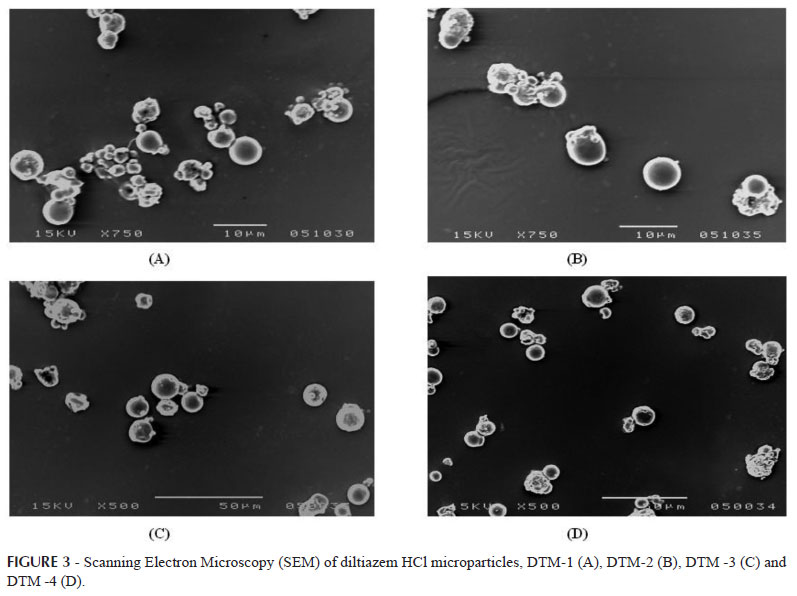The efficacy of a drug in a specific application requires the maintenance of appropriate drug blood level concentration during a prolonged period of time. Controlled release delivery is available for many routes of administration and offers many advantages (as microparticles and nanoparticles) over immediate release delivery. These advantages include reduced dosing frequency, better therapeutic control, fewer side effects, and, consequently, these dosage forms are well accepted by patients. Advances in polymer material science, particle engineering design, manufacture, and nanotechnology have led the way to the introduction of several marketed controlled release products and several more are in pre-clinical and clinical development. The objective of this work is to prepare and evaluate diltiazem HCl loaded albumin microparticles using a factorial design. Albumin (natural polymer) microparticles were prepared by emulsion heat-stabilization method. Selected formulations were characterized for their entrapment efficiency, particle size, surface morphology, and release behavior. Analysis of variance for entrapment efficiency indicates that entrapment efficiency is best fitted to a response surface linear model. Surface morphology was studied by scanning electron microscopy. Scanning electron microscopy of the microparticles revealed a spherical, nonporous and uniform appearance, with a smooth surface. The geometric mean diameter of the microparticles was found to be 2-9 µm, which more than 75% were below 3.5 µm and drug incorporation efficiency of 59.74 to 72.48% (w/w). In vitro release profile for formulations containing diltiazem HCl loaded BSA microparticles with heat stabilization technique shows slow controlled the release of the drug up to 24 hours. The release pattern was biphasic, characterized by an initial burst effect followed by a slow release. All selected microparticles exhibited a prolonged release for almost 24 hours. On comparing regression-coefficient (r²) values for Hixson Crowel, Higuchi and Peppas kinetic models, different batches of microparticles showed Fickian, non-Fickian, and diffusion kinetics. The release mechanism was regulated by D:P ratio. From the statistical analysis it was observed that as the drug:polymer (D:P) ratio increased, there was a significant increase in the encapsulation efficiency. Based on the particle size, entrapment efficiency and physical appearance, DTM-3 formulations were selected for in vivo release study and stability study. The in vivo result of drug loaded microparticles showed preferential drug targeting to liver followed by lungs, kidneys and spleen. Stability studies showed that maximum drug content and closest in vitro release to initial data were found in the formulation stored at 4 ºC. In present study, diltiazem HCl loaded BSA microparticles were prepared and targeted to various organs to satisfactory level and were found to be stable at 4 ºC.
Diltiazem HCl loaded microparticles; Diltiazem HCl loaded microparticles; Diltiazem HCl loaded microparticles; Albumin; Microparticles batches; Cloridrato de diltiazem; Cloridrato de diltiazem









